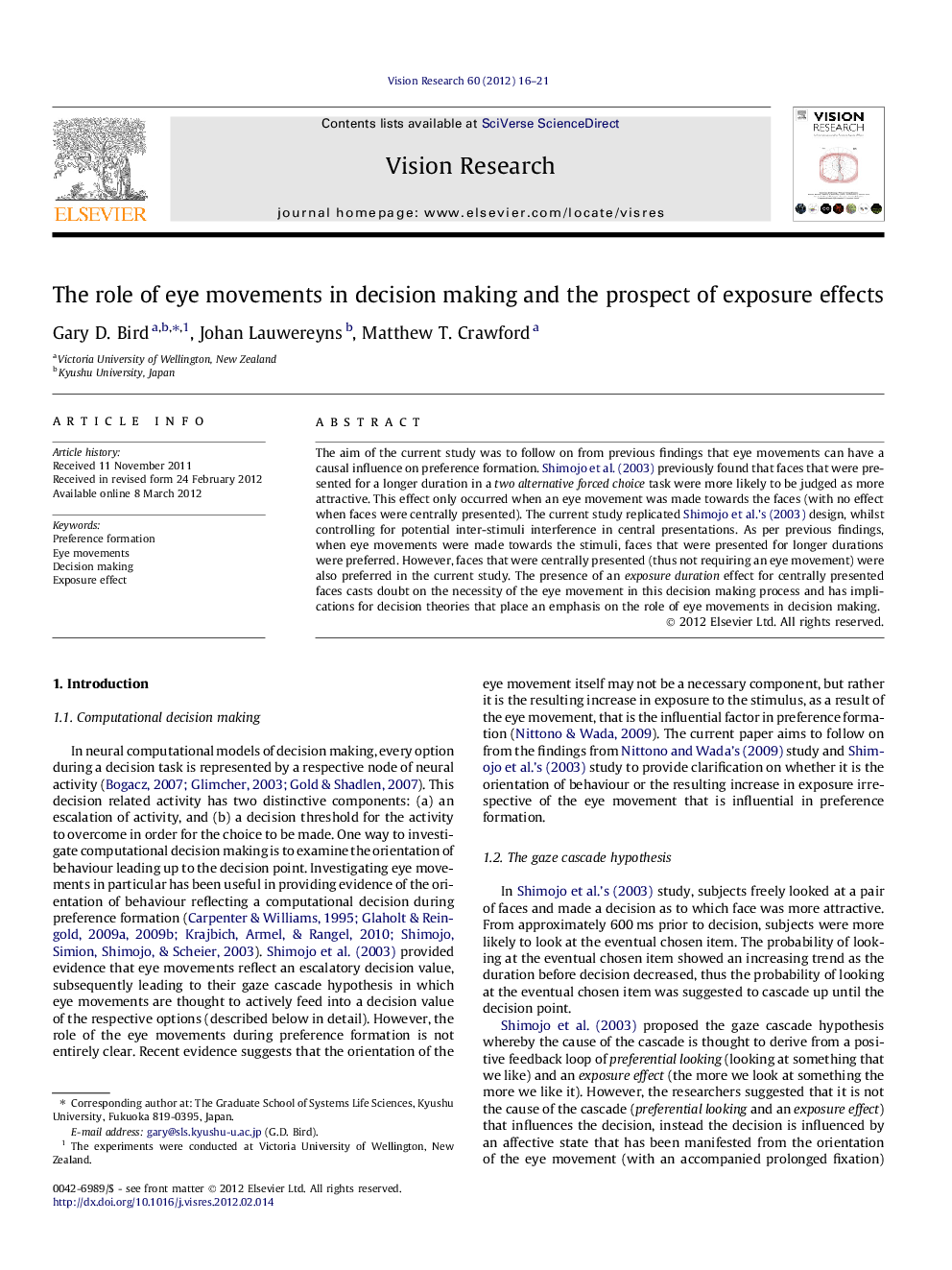| Article ID | Journal | Published Year | Pages | File Type |
|---|---|---|---|---|
| 4033956 | Vision Research | 2012 | 6 Pages |
The aim of the current study was to follow on from previous findings that eye movements can have a causal influence on preference formation. Shimojo et al. (2003) previously found that faces that were presented for a longer duration in a two alternative forced choice task were more likely to be judged as more attractive. This effect only occurred when an eye movement was made towards the faces (with no effect when faces were centrally presented). The current study replicated Shimojo et al.’s (2003) design, whilst controlling for potential inter-stimuli interference in central presentations. As per previous findings, when eye movements were made towards the stimuli, faces that were presented for longer durations were preferred. However, faces that were centrally presented (thus not requiring an eye movement) were also preferred in the current study. The presence of an exposure duration effect for centrally presented faces casts doubt on the necessity of the eye movement in this decision making process and has implications for decision theories that place an emphasis on the role of eye movements in decision making.
► We examined the role of eye movements in preference formation. ► Previous research has found a causal role for eye movements. ► We addressed theoretical issues with previous research. ► We found that eye movements may not have a causal role as previously thought. ► It is evident that exposure duration is a more likely influence on preference.
